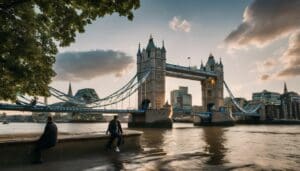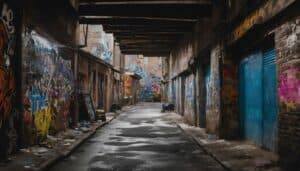Stories of Bravery on the RMS Titanic
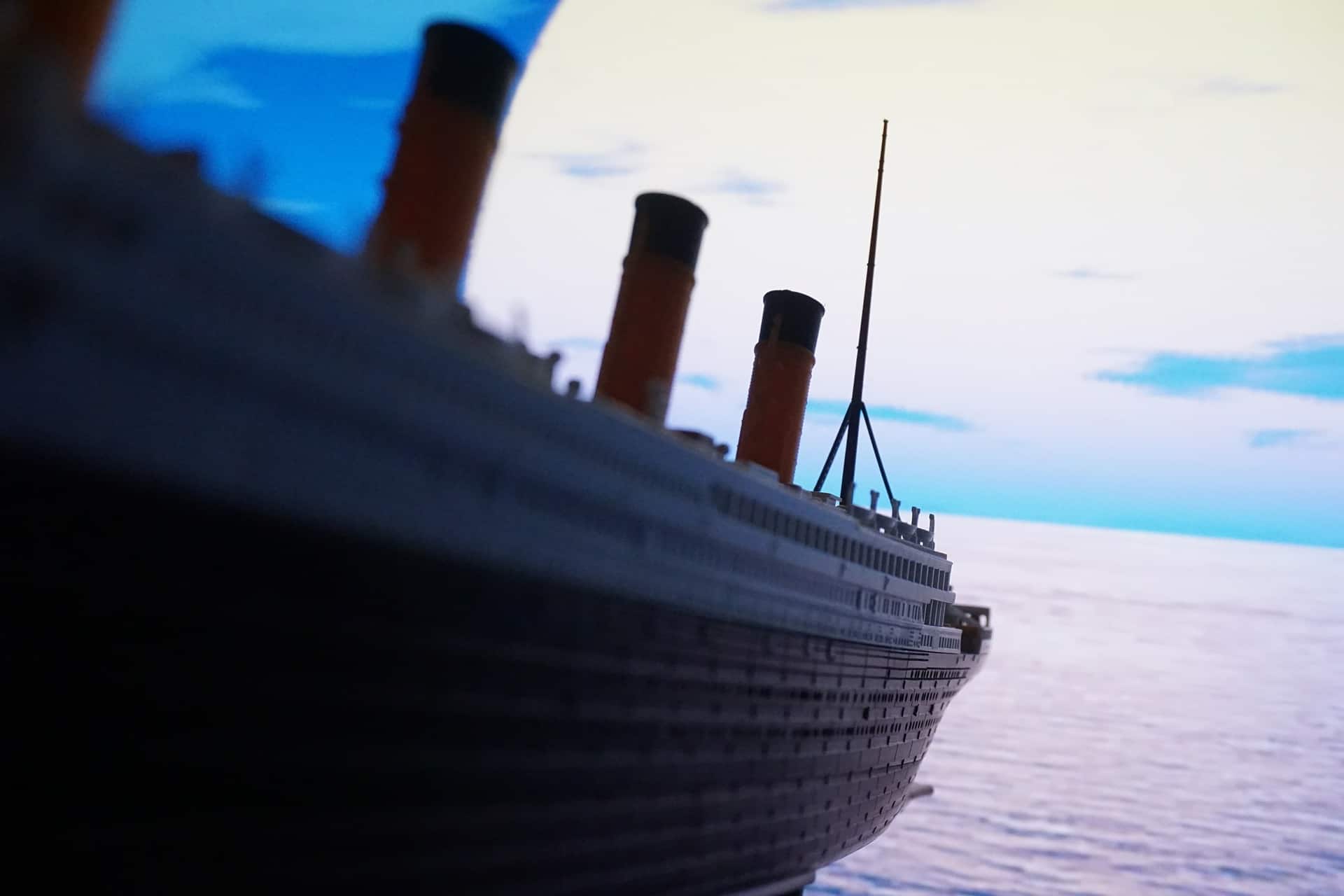
Updated On: March 31, 2024 by Dina Essawy
The ill-fated voyage taken by the Titanic in 1912 has been at the forefront of people’s minds for more than 100 years since the tragedy. On its maiden voyage from Southampton to New York City, the ship hit an iceberg near the coast of Newfoundland close to midnight on 14 April 1912, causing the death of more than 1,500 people due to the shortage of lifeboats.
More precisely, about 400 miles south of Newfoundland, Canada, is where the Titanic sank. It took 73 years to find the ship’s final resting place, on the 1st of September, 1985. Technical limitations and the vastness of the Atlantic Ocean were the reasons it took so long to find the Titanic. The ship’s interiors were remarkably well preserved when the Titanic was found, although the wreckage of the Titanic was split in two.
Bravely, more than 1,300 men went down with the ship to let their wives and children board the lifeboats first. The stories of bravery on the RMS Titanic will never be forgotten.
Onboard the ship during the fateful evening were people who ranged from the wealthiest families in Europe and America to the poorest of the poor, attempting to make a new life for themselves in the New World.
In the past 100 years, many facts and a lot of new information came out about the voyagers, those who survived and those who tragically perished along with the ship. Many stories of heroism in the face of peril are told to this day. Here are some of the most well-known and exciting facts about the people who faced an unspeakable tragedy.
Table of Contents: Stories of bravery on the RMS Titanic
In this article, we have gathered information about the survivors of the Titanic and the deceased who acted heroically during the ship’s sinking. Below, we have included a list of sections in this article, each related to specific people on the boat who helped others during the tragedy and are discussed in detail below.
We will also include videos of the Titanic Quarter and Titanic Museum throughout the article so you can see where the ship was built and explore the gallery while learning real Titanic stories.
Click on a name to skip to that section of the article.
- The RMS Titanic Crew
- The Drunk Chef
- Ben Guggenheim was not a coward
- The Unsinkable Molly Brown
- Unlucky Frederick Fleet
- Wireless officers Harold Bride and Jack Phillips
- Heroines Lucile Carter and Noël Leslie
- Archibald Gracie IV
- The Most Famous Orchestra in History
- William Moyles
- John Jacob Astor IV
- Ida and Isidor Straus
- Jeremiah Burke – His message in a bottle
- Fr Frank Browne – The Last Photos of life on the Titanic preserved in time
- Joseph Bell and his Team of Engineers
- Charles Lightoller – The man who decided ‘women and children first’
- Millvina Dean – The youngest survivor
- The Captain
- The People of New York City
- The Man Who Discovered the Wreckage
Other sections in this article include:
The RMS Titanic Crew Members
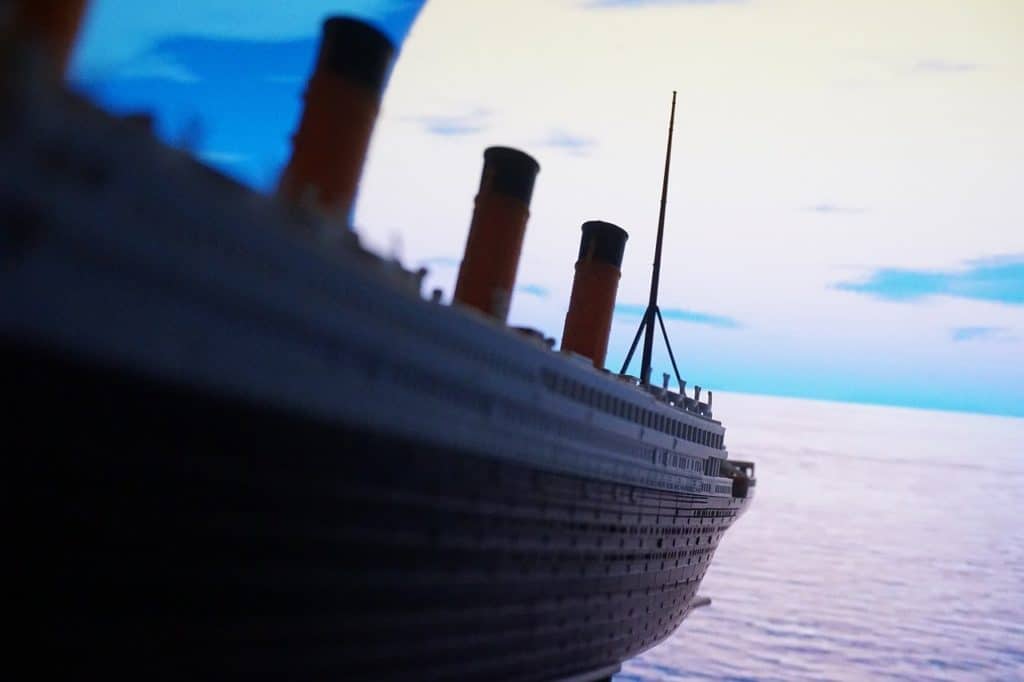
Some of the most heart-warming and heart-wrenching stories that came out of that tragedy were the acts of bravery committed by the members of the ship’s crew.
One of these stories involves the postal service workers aboard the ship. Since the RMS Titanic stands for Royal Mail Steamer Titanic, she had around 200 sacks of registered mail on board. A survivor of the tragedy reported seeing all five postal crew working furiously as the ship went down, trying to save the registered mail and take it to the top deck. Sadly, none of the crew members survived.
One of the crew members, Oscar Scott Woody’s body, was found later on with his pocket watch still intact. Another postal worker, John Starr March, whose watch was also found, proved the story accurate, as his clock seems to have stopped at 1:27, demonstrating that they had spent time trying to save the mail.
Their heroism not only helped save the mail but also reported that the registered mailbags on board the ship were used to help recover the infant survivors of the disaster.
The Drunk Chef
In both James Cameron’s depiction of the Titanic’s sinking and the film A Night to Remember, the character of a drunk chef is included, which many people might have overlooked. The drunk chef was a real person, not just a character in the Titanic movie. The drunk was named Chief Baker Charles Joughin, who acted like a true hero throughout the tragedy despite his inebriated state.
Joughin is said to have thrown women into lifeboats, in addition to chucking 50 deckchairs into the Atlantic for people to cling to. Also, when he was assigned to the number 10 lifeboat as a skipper, he jumped out at the last moment and back on the Titanic because he thought that leaving the ship would “set a bad example”.
It also seems that his excessive drinking helped save his own life. Due to the large amounts of whiskey he had taken in, he was able to survive the sub-zero waters for hours. And in the end, he scrambled onto an overturned canvas lifeboat. He returned to Liverpool and lived for another 44 years.
While Titanic the movie took some liberties when making the film, which is entirely understandable as information surrounding the ship sinking is limited, it is nice that Charles Joughin’s legacy has been preserved in the movie.
Ben Guggenheim Was Not A Coward
“No woman shall be left aboard because Ben Guggenheim is a coward,” is what millionaire Benjamin Guggenheim said before he changed into formal evening wear and sat in deckchairs, smoking cigars and drinking brandy, awaiting his death.
Although his wealthy status afforded him the right to get on a lifeboat first, and even though he could have bribed the crewmen as many of his peers did to escape death, Ben Guggenheim chose to stay behind instead of taking the place of anyone else.
The Unsinkable Molly Brown
Perhaps one of the most well-known stories to come out of the Titanic was that of Molly Brown, portrayed in the James Cameron film by Kathy Bates.
Famously known as “The Unsinkable Molly Brown,” Margaret Brown earned that nickname by taking over the lifeboat she was on and threatening to throw the quartermaster overboard if he didn’t turn back to look for more survivors. She successfully got the other women on board to work with her, and they managed to row their way back to the crash site and save several more people.
Molly Brown, a Titanic hero and philanthropist, used her status after the disaster to promote her activism, fighting for women’s rights and children’s education and preserving and commemorating the bravery of the men who sacrificed themselves on the ship.
Molly received the French Légion d’Honneur for her work rebuilding areas behind the front line and helping wounded soldiers with the American Committee for Devastated France during WWI.
Kathy Bates portrayed the unsinkable Molly Browne in the Titanic movie and is arguably one of the most famous Titanic survivors.
Unlucky Frederick Fleet
Frederick Fleet was one of the ship’s lookouts and, consequently, was one of the first two people to spot the iceberg and then yell, “Iceberg! Right ahead!”
After the ship hit the iceberg, the Fleet manned one of the lifeboats and got many people to safety. However, unlike other proclaimed heroes, his welcome home was not very warm.
Frederick was interrogated on more than one occasion to determine whether or not the disaster could have been avoided. He always insisted that he could have prevented it if he’d just had binoculars. He, unfortunately, went on to suffer from depression, which resulted in his suicide in 1965.
Wireless Officers Harold Bride and John “Jack” Phillips
One of the wireless officers on the Titanic, Harold Bride, was responsible for sending SOS messages to nearby ships, thus allowing the RMS Carpathia to rescue the Titanic survivors.
He was pulled underneath an overturned collapsible boat when the ship went under. He could hold on to its underside all night before being rescued by the Carpathia. After such a harrowing night, Bride did not simply relax; he went back to work, aiding the Carpathia’s wireless officer in sending messages from the other Titanic survivors.
While Bride managed to survive, it was his colleague who perished while trying to send as many distress calls as possible. John “Jack” Phillips insisted on remaining in the room manning the wireless equipment even as the water rushed in. When Bride was saved, he recounted his friend’s bravery in terror.
Heroines Lucile Carter and Noël Leslie
Despite their aristocratic status, Lucile Carter and Countess Noël Leslie helped get their respective lifeboats to safety by managing the oars tirelessly for hours to get to safety.
A noted countess and philanthropist, Noël Leslie made perhaps her most significant mark on history when she took charge of one of the Titanic lifeboats and helped steer it to safety. She also urged them to sing songs to keep their spirits up. Not only that but when they reached the Carpathia, she is also said to have gathered food and medicine and translated for as many passengers as she could.
Lady Countess Rothes ( Noël Leslie / Lucy Noël Martha nee Dyer-Edwards)
Noël Leslie, Countess of Rothes, was a British philanthropist and social leader and is considered a heroine of the Titanic disaster. The countess was a popular figure in London society known for her beauty, grace, personality, and diligence. She helped organise lavish entertainment patronised by the English royalty and members of the nobility.
The Countess was involved in charity work throughout the UK, assisting the Red Cross with fundraising and as a nurse in London during World War I. She was also a leading benefactor of Queen Charlotte’s and Chelsea Hospital.
Noël embarked on the Titanic in Southampton with her parents, her husband’s cousin Gladys Cherry and her maid Roberta Maioni. Her parents got off at Cherbourg while the rest of the group embarked for New York. The Countess had planned to move to America to start a new life with her husband.
The three women boarded a lifeboat when the ship sank, and Noël divided her time between steering the lifeboat and consoling the troubled women and children who had left their husbands on the boat. When the Carpathia was sighted, the women sang a hymn called ‘Pull for the Shore’ and afterwards sang ‘Lead, Kindly Light’ upon Noël’s suggestion. She continued to help the women and children on the new ship, making clothes for the babies and caring for the women and children around her.
Lead, Kindly Light Lyrics
Lead, kindly light, amid the encircling gloom
Lead thou me on
The night is dark, and I am far from home
Lead thou me on
Keep thou my feet, I do not ask to see
The distant scene, one step enough for me
Aled Jones
However, Noël was not interested in the praise or publicity she got as a heroine, insisting that the seaman Jones, her cousin-in-law Gladys and other occupants deserved the recognition. She gifted Jones with an inscribed silver pocket watch, to which Jones responded by gifting the Countess the brass number plate from their lifeboat. The pair wrote to each other every Christmas and maintained communication until her death.
Thomas Dyer-Edwards, the countess’ father, gifted a lifeboat called Lady Rothes to the Royal National Lifeboat Institution in 1915 in gratitude for his daughter’s rescue from the Titanic.
In 1918, an exhibition at the Grafton Galleries in London included a pair of pearls from a 300-year-old heirloom necklace Noël wore when she escaped the Titanic. The auction was actually for the Red Cross.
Lady Countess Rothes is famous for taking the tiller of her lifeboat and helping row the craft to the safety of the rescue ship Carpathia. Alongside able seaman Tom Jones, Noël handled the boat’s tiller, steering it away from the sinking liner and rowing it to the rescue ship while encouraging other survivors with calm decisiveness.
The Countess was featured in the 1979 movie SOS Titanic by Kate Howard and James Cameron’s 1997 film. Rochelle Rose portrayed the countess in the movie. She is also mentioned in the first episode of Downtown Abbey by the Crawley family, who alluded to having spent time with her.
Archibald Gracie IV
Insisting on following the “women and children first” mandate, Archibald Gracie IV remained aboard the Titanic until every lifeboat was filled up, and then he helped launch the collapsible boats.
When his collapsible overturned, he and several other men had to hold onto its underside for the entire night until he was rescued. However, he sadly succumbed to injuries he had sustained during the wreck and died about a year and a half later due to his poor health.
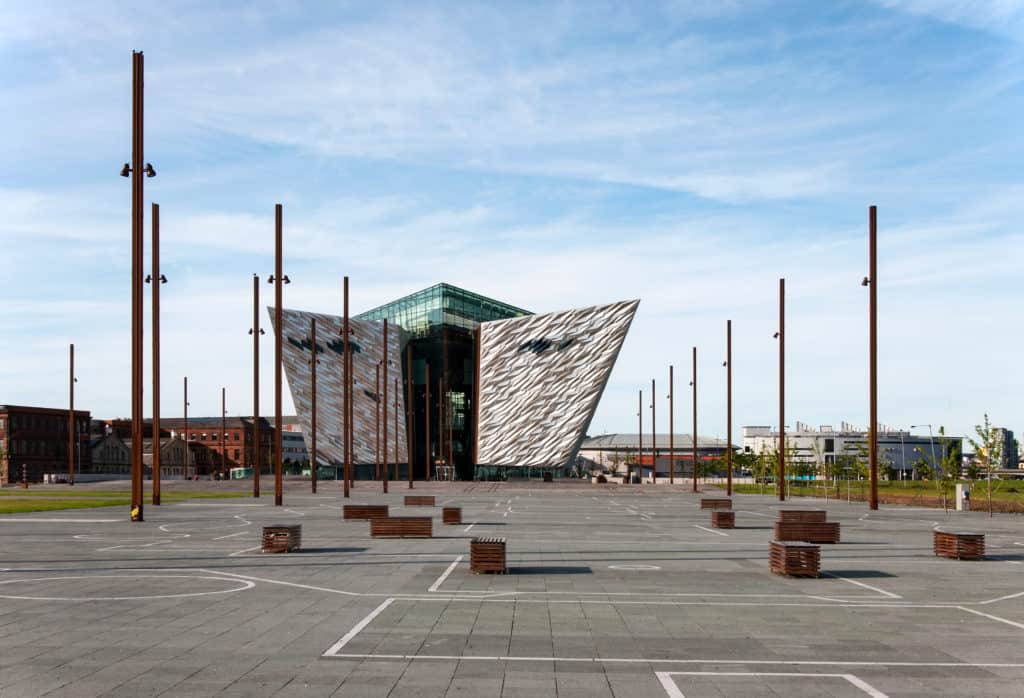
The Most Famous Orchestra in History
Mainly due to their portrayal in the 1997 film, the Titanic orchestra gained even more fame and became well–known for their dedication and bravery in the face of absolute mad panic.
Eight band members were part of the orchestra: violinist and bandmaster Wallace Hartley; violinists John Law Hume and Georges Alexandre Krins; pianist Theodore Ronald Brailey; bassist John Frederick Preston Clarke; and cellists Percy Cornelius Taylor, Roger Marie Bricoux and John Wesley Woodward.
The orchestra kept playing as the ship sunk into the icy waters, trying tirelessly to spread as much calm as they could amid such a horrific tragedy.
Many survivors reported that the band continued to play until the very end, with one famously saying: “Many brave things were done that night, but none were more daring than those done by men playing minute after minute as the ship settled quietly lower and lower in the sea.
The music they played served alike as their immortal requiem and their right to be recalled on the scrolls of undying fame.”
Around 40,000 people were estimated to have attended Wallace Hartley’s funeral. On 29 April 1912, the Metropolitan Opera organized a special concert in aid of Titanic’s victims. Fittingly, the concert featured ‘Nearer My God to Thee’ and ‘Autumn’, both believed to have been played by the orchestra as the ship went down.
William Moyles
Engineer William Moyles was another of the unsung heroes on the Titanic as he sacrificed his life by trying to keep the power and lights on for as long as possible.
John Jacob Astor IV
“The ladies have to go first… Get in the lifeboat to please me… Good-bye, dearie. I’ll see you later.” Those were the reported last words of John Jacob Astor IV, the wealthiest man aboard the Titanic whose body was recovered with $2440 in his pockets, an inordinately large sum of money at the time.
“The conduct of Colonel John Jacob Astor was deserving of the highest praise,” said Colonel Archibald Gracie, the last man to be rescued. “The millionaire New Yorker devoted all his energies to saving his young bride, nee Miss Force of New York, who was in delicate health. Colonel Astor helped us in our efforts to get her in the boat. I lifted her into the boat and as she took her place, Colonel Astor requested permission of the second officer to go with her for her protection.
“‘No, sir,’ replied the officer, ‘Not a man shall go on a boat until the women are all off.’ Colonel Astor then inquired the number of the boat, which was being lowered away and turned to the work of clearing the other boats and in reassuring the frightened and nervous women.”
Ida and Isidor Straus
Many of the survivors reported with awe how Mrs. Straus steadfastly refused to get on a lifeboat and leave her husband behind. “Mrs. Isidor Straus,” said Colonel Gracie, “went to her death because she would not desert her husband. Although he pleaded with her to take her place in the boat, she steadfastly refused, and when the ship settled at the head, the two were engulfed in the wave that swept her.”
Ida reportedly said, “As we have lived, so we will die together”.
Isidor Straus had been the owner of the American department store Macy’s since the late 1800s
James Cameron featured the couple in his 1997 movie. You may remember the emotional scene where the couple kissed and held each other in bed as water slowly entered the room, and the ship’s quartet played ‘Nearer My God to Thee. ‘ A deleted scene shows Isidor trying to persuade Ida to board a lifeboat which she refuses to do. It’s difficult to believe that one of the most gut-wrenching scenes in the film is based on an actual couple and highlights the emotional turmoil families feel losing their loved ones to such a tragic disaster.
Pictured above is a photograph from the 31st of May 1911, the day that the Titanic was launched by Harland & Wolff at Belfast.
Jeremiah Burke – A message in a bottle
Jeremiah Burke was born in Glanmire, Co. Cork, and he planned to leave his family home and farm in Cork and immigrate to New York. Two of Jeremiah’s oldest sisters had emigrated and settled in the USA, and his older sister Mary had married and started a family in Boston. She had sent over money to her brother Jeremiah to join them.
Burke was a third-class passenger who travelled aboard the ship with his cousin Hanora Hegarty. Both Jeremiah and Hanora died in the sinking. Thirteen months later, in the early summer of 1913, a postman found a small bottle on a shingle beach near Cork Harbour while walking his dog. Inside the bottle was a message which read:
13/04/1912
from Titanic,
Good Bye all
Burke of Glanmire
Cork
Letter from Jeremiah Burke
The bottle was brought to the local police station before being passed on to the Burke family. According to Brid O’Flynn, Jeremiah’s grand-niece, Jeremiah had received a small bottle of holy water from his mother for good luck.
The family recognised both the bottle and handwriting and explained that a bottle of holy water would’ve been revered by their son and wouldn’t have been discarded or thrown in the water unnecessarily. They believed the message was written in his last moments as a desperate attempt to send a message to his loved ones. The fact that the bottle reached his hometown parish is miraculous, and the message has since been donated to the Cobh Heritage Centre, according to the Belfast Telegraph.
Father Frank Browne – Photos preserved in time
Fr Francis Patrick Mary Brown was an Irish Jesuit, a skilled photographer and a military chaplain during the First World War. However, he is most well known for his photographs of the RMS Titanic, its passengers and crew taken shortly before its sinking in 1912.
In April 1912, Fr. Browne received a present from his uncle, a ticket for the maiden voyage of the RMS Titanic from Southampton to Queensland Cork via Chersbourg, France.
Browne took dozens of photographs of life aboard the Titanic during his trip, including the gymnasium, the Marconi room, the first-class dining saloon and cabin. He also took photos of the passengers enjoying walks on the promenade and the boat decks. His photos of the passengers and crew, including Captain Edward Smith, are the last known images of many people on the Titanic.
But Fr Browne’s story doesn’t end there; he considered staying on the ship to New York. During his time onboard, the priest befriended an American couple who were millionaires. They offered to pay for his ticket to New York and back to Ireland if he agreed to spend the voyage to New York in their company.
Fr Browne went as far as to telegraph his superior, asking permission to extend his trip. Still, his time off request was sharply denied, and the priest left the ship when it docked off in Queensland to continue his theological studies in Dublin. When Fr Browne heard that the ship had sunk, he realised his photos were of great value. He negotiated the sale of the images to various newspapers and received free film for life from the Kodak company. Browne would become a frequent contributor to Kodak magazine.
Post-war, Browne faced ill health. He was sent to Australia for an extended time as the warmer climate would aid his recovery. Browne photographed life aboard ships in Cape Town, South Africa, and Australia. On his return journey, he would photograph many more countries worldwide; it is estimated that Browne took over 42000 photos during his life.
Joseph Bell and his team of engineers
All of the engineers on the Titanic, including Chief Engineer Joseph Bell and his team of engineers and electricians, stayed onboard the ship, working furiously to slow the speed at which the ship sank.
If the cold water of the Atlantic Ocean had come in contact with the boilers, it would have created a massive explosion that would’ve sank the ship much faster. The team sacrificed their own lives to ensure that as many people as possible stood a chance at survival.
Bell and the team members who chose to stay below deck delayed the ship’s sinking by as much as an hour and a half. This allowed more time to save the lives of passengers.
Charles Lightoller – Second Officer
Charles Lightoller was the most senior staff member aboard the Titanic to survive. He was in charge of evacuations and maintained the ‘Birkenhead Drill’ (the principle of women and children being the first to be evacuated). This was not maritime law but a chivalric ideal, and Lightoller only allowed men aboard lifeboats if he felt they were needed to ensure the safety of the lifeboat. Using this principle, there was less delay in deciding who got to be rescued first and many poorer women and children were saved.
Seeing the ship sink into the ocean and realising that there was nothing more he could do, Lightoller jumped into the ocean, managing to avoid being sucked down by the ship. Lightoller survived by clinging to an overturned lifeboat and was the last survivor to be pulled from the water when the Carpinthia arrived the following day.
Lightoller became a decorated commanding officer for the Royal Navy during WWI. He came out of retirement to assist in the evacuation at Dunkirk by providing his yacht to help soldiers trapped on the beach.
The highest-ranking officer in the Titanic who survived, Lightoller, was praised for his actions, which saved many lives.
Millvina Dean – The Youngest Survivor
Millvina Dean was only 2 months old when her family boarded the Titanic. The family decided to immigrate to the United States. Tragically, they were never meant to be on the ship; their original boat was cancelled due to a coal strike, and they were transferred onto the Titanic as third-class passengers.
Millvina, her brother and her mother were placed in Lifeboat 10, but her father unfortunately did not survive. As with the fate of many immigrant widows, New York or life in America, in general, was no longer a feasible option, nor was it something many people wanted to do, as the exciting prospect of starting a new life with their partner was now impossible.
After seeing A Night to Remember in 1958, Millvina refused to watch James Cameron’s Titanic with Leonardo DiCaprio or other related TV shows or movies. She understandably found it difficult to watch the sinking of the ship, as the vivid film would give her nightmares of her father’s death. She also criticised the idea of transforming a tragedy into entertainment.
She became involved in various Titanic-related events, even visiting her relatives and the house her parents had planned to live in in Kansas City. It is fascinating to think just how much of her life was influenced by the tragedy.
Millvina will forever be one of the most famous Titanic passengers because of being the youngest survivor on the ship.
Captain Edward Smith
One of the most famous stories to come from the tragedy of the sinking of the Titanic is the fate of its captain, Edward Smith, who chose to remain with the ship until his dying breath. Stories of his bravery later came out, including that of an eyewitness, Fireman Harry Senior, who reportedly saw Smith holding a child up above his head during his final breaths. Other accounts have recalled Smith urging lifeboats on as he froze.
The truth is that there are various wildly contradicting accounts of Smiths’ behaviour during the events of the Titanic sinking, and we don’t know what exactly happened. Some hailed his actions as heroic, staying on the ship, while others claimed he was shocked and that the Second captain did most of the work. Others cite that he was reckless dealing with the iceberg, and his actions are directly linked to the ship’s sinking, while one man even claimed that the captain survived the tragedy.
There are also varying degrees of Smiths’ activity reported during the tragedy. Some accounts say he was too shocked to lead and entirely indecisive. In contrast, other accounts show him helping many passengers get to safety. Smith had been at sea for 40 years without any significant accidents, so both are probably true. It is hard to believe that anyone wouldn’t be scared on the ship, especially if they were part of the crew and knew precisely what would happen, but that does not mean that they could not act courageously despite their fear.
The People of New York City
It should be taken into account that many of the people who survived the wreck were either severely shocked, disoriented or had just lost the men they loved and who were to provide for them as they ventured into the New World. It is then comforting to know that the people of New York were said to have stepped in to help.
They opened their homes and hearts to the survivors and provided whatever aid they could to ease their transition and help them deal with the tragedy.
It is terrifying to imagine yourself in the situation many survivors found themselves in. I was filled with nervous excitement just a few hours ago when I realized that I was in a disaster and that my partner had become stranded on a sinking ship. To become the sole breadwinner and caregiver of your family while arriving in a foreign country and facing the prospect of living there unemployed or sailing back home after such a traumatising event at sea isn’t enjoyable to even think about.
The comfort many New Yorkers provided to women and children in their darkest hours is, therefore, something that must be mentioned in any article about the heroes of the Titanic.
Esther Hart, who had been travelling with her husband and daughter to New York, was forced to board the lifeboat with her daughter, leaving her husband behind, never to be seen again. They had plans to immigrate to America but were split up by the tragedy.
Esther noted the displays of humanity and kindness she found after facing such profound loss. “I have never experienced such real kindness. God bless the ladies of the ‘Women’s Relief Committee of New York’, say I heartily and fervently. Why, Mrs Satterlee drove me in her beautiful car to the hotel where I was staying pending my return to England and wanted me to go to lunch with her in her house, but my heart was too full. She knew the reason and appreciated it like the lady she is.”
The man who found the wreckage
On Sunday, 1 September 1985, Robert Ballard and his oceanographers discovered the wreckage of the Titanic. You can read more about his discovery below
The Carpathia and the Californian
As we have mentioned throughout this article, the Carpathia or RMS (Royal Mail Ship) Carpathia rescued many of the survivors mentioned in this article. But how did the Carpathia find out the Titanic hit an iceberg? Well, a few days into her trip, the ship received a distress call, and its Captain, Arthur Henry Rostron, rerouted the Carpathia to rescue the survivors.
The Carpathia was 60 miles away from the Titanic. Despite the dangers icebergs posed to the ship, the Carpathia diverted its course at full speed to assist the Titanic ship as quickly as possible. It took the Carpathia just under four hours to reach the Titanic after they received the call.
On the other hand, another ship called the Californian sent an iceberg warning to a nearby ship, the Titanic, which also picked up the Antillian. Despite the warning, both ships continued ahead, but after encountering an ice field, the Californian stopped for the night and sent another warning to the Titanic. This transmission was received, but due to a backlog of passenger telegrams, the person who intercepted the message was frustrated to be interrupted and asked the Californian ship to stop sending any further messages until they had caught up with their backlog.
The message was not marked MSG, which meant ‘Master Service Gram’ and essentially required the Captains to acknowledge that they had received the message, so it was obviously reserved for important information. Had this message been delivered to the Captain, the circumstances may have differed.
As a result, the Californian wireless operator turned off the machine for the night and went to sleep. Less than 90 minutes later, SOS alerts from the Titanic were sent out. The ship was criticised heavily for its inaction; it was much closer to the Titanic than the Carpathia. So, had the Californian received this message, many more lives could have been saved before the ship sunk. The substantial loss of life could have been prevented.
Titanic Belfast
The RMS Titanic was built in Belfast and was the second of three Olympic-class ocean liners, designed to be the largest and most luxurious ship of their time. The first was RMS Olympic, built in 1911, and the third was called HMS Britannic, built in 1915.
Belfast has become one of the best places in the world to visit if you want to learn more about the Titanic. The Belfast Titanic Museum offers a range of tours around the city that follow in the footsteps of those who built the Titanic.
There is plenty to explore and experience in the Titanic Museum Belfast, such as nine interactive experiences that will immerse you into the lives of the people who built and boarded the ship. There is also a discovery tour and a chance to board the SS Nomadic – The Titanic’s sister ship and the world’s last remaining White Star Vessel.
If you plan to visit Belfast, where the Titanic was built, check out our ultimate Belfast travel guide. If you choose to see the city, the Titanic Experience Belfast is a great place to start your trip.
Titanic Cobh
A lesser-known Irish location related to the Titanic is Cobh, Co. Cork. Known as Queenstown back in 1912, Cobh was the last place where the Titanic’s passengers departed. The Titanic, in Cobh’s experience, looks at the lives and fate of people who boarded the Titanic from Ireland.
The Titanic left Southampton, England and called to Cherbourg in France before stopping in Cobh, Ireland. 123 people boarded from Roches Point in Queenstown; three were in first class, seven were in second, and the rest travelled in third class, known as steerage.
The Cobh Titanic experience is another essential location in the ship’s history, and the story of the Titanic and Cobh and the Irish people who boarded the ship is fascinating. The Titanic and Cobh share a unique history as the last place the ship stopped before venturing across the Atlantic.
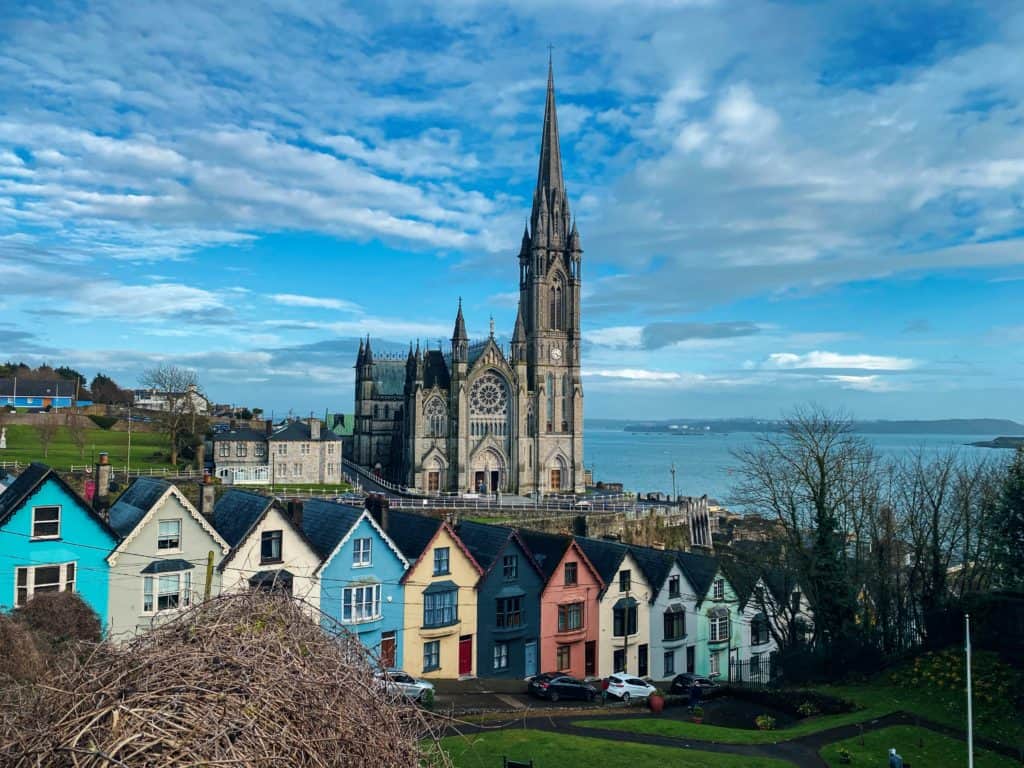
Final Thoughts
The RMS Titanic will forever be known as the ship that went down and took many lives with it. However, we should all take time to learn of the heroism and absolute kindness that drove the people on board during what they believed to be their last moments on Earth.
We hope you have learned something valuable after reading our Titanic heroes and survivors list. So many heroes of the Titanic saved countless lives due to their brave actions, so if we have left anyone out, please let us know.
The story of tragedy also brings hope, and the stories of the Titanic heroes will continue to live on forever.
Worthy reads that might interest you:
Irish Diaspora: Why Ireland’s Citizens Emigrated| The Story Behind the Belfast Peace Walls| Belfast History: The Origins of a City| Famous Landmarks in Ireland| Famous Irish People Who Made History in their Lifetime|


